I'm trying to calculate the relative phase between a time series of two angles. Using below, the angles are measured by the rotation derived from the xy points associated to Label A and Label B. The angles are moving in a similar direction for the first 3 time points and then deviate for the remaining 3 time points.
My understanding was that the relative phase calculation using a Hilbert transform signified that values closer to 0 ° referred to a pattern of coordination or in-phase. Conversely, values closer to 180° referred to asynchronous patterns or anti-phase. Yet when I export the results below I'm not seeing this?
import pandas as pd
import matplotlib.pyplot as plt
import numpy as np
from scipy.signal import hilbert
df = pd.DataFrame({
'Time' : [1,1,2,2,3,3,4,4,5,5,6,6],
'Label' : ['A','B','A','B','A','B','A','B','A','B','A','B'],
'x' : [-2.0,-1.0,-1.0,0.0,0.0,1.0,0.0,1.0,0.0,1.0,0.0,1.0],
'y' : [-2.0,-1.0,-2.0,-1.0,-2.0,-1.0,-3.0,0.0,-4.0,1.0,-5.0,2.0],
})
x = df.groupby('Label')['x'].diff().fillna(0).astype(float)
y = df.groupby('Label')['y'].diff().fillna(0).astype(float)
df['Rotation'] = np.arctan2(y, x)
df['Angle'] = np.degrees(df['Rotation'])
df_A = df[df['Label'] == 'A'].reset_index(drop = True)
df_B = df[df['Label'] == 'B'].reset_index(drop = True)
y1 = df_A['Angle'].values
y2 = df_B['Angle'].values
ang1 = np.angle(hilbert(y1),deg=False)
ang2 = np.angle(hilbert(y2),deg=False)
f,ax = plt.subplots(3,1,figsize=(20,5),sharex=True)
ax[0].plot(y1,color='r',label='y1')
ax[0].plot(y2,color='b',label='y2')
ax[0].legend(bbox_to_anchor=(0., 1.02, 1., .102),ncol=2)
ax[1].plot(ang1,color='r')
ax[1].plot(ang2,color='b')
ax[1].set(title='Angle at each Timepoint')
phase_synchrony = 1-np.sin(np.abs(ang1-ang2)/2)
ax[2].plot(phase_synchrony)
ax[2].set(ylim=[0,1.1],title='Instantaneous Phase Synchrony',xlabel='Time',ylabel='Phase Synchrony')
plt.tight_layout()
plt.show()
